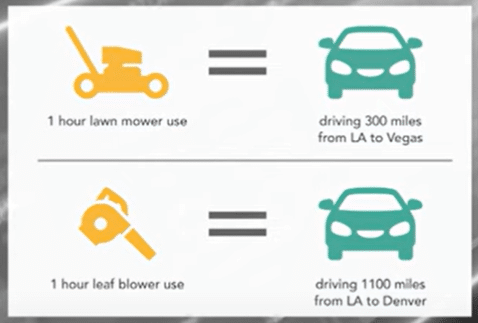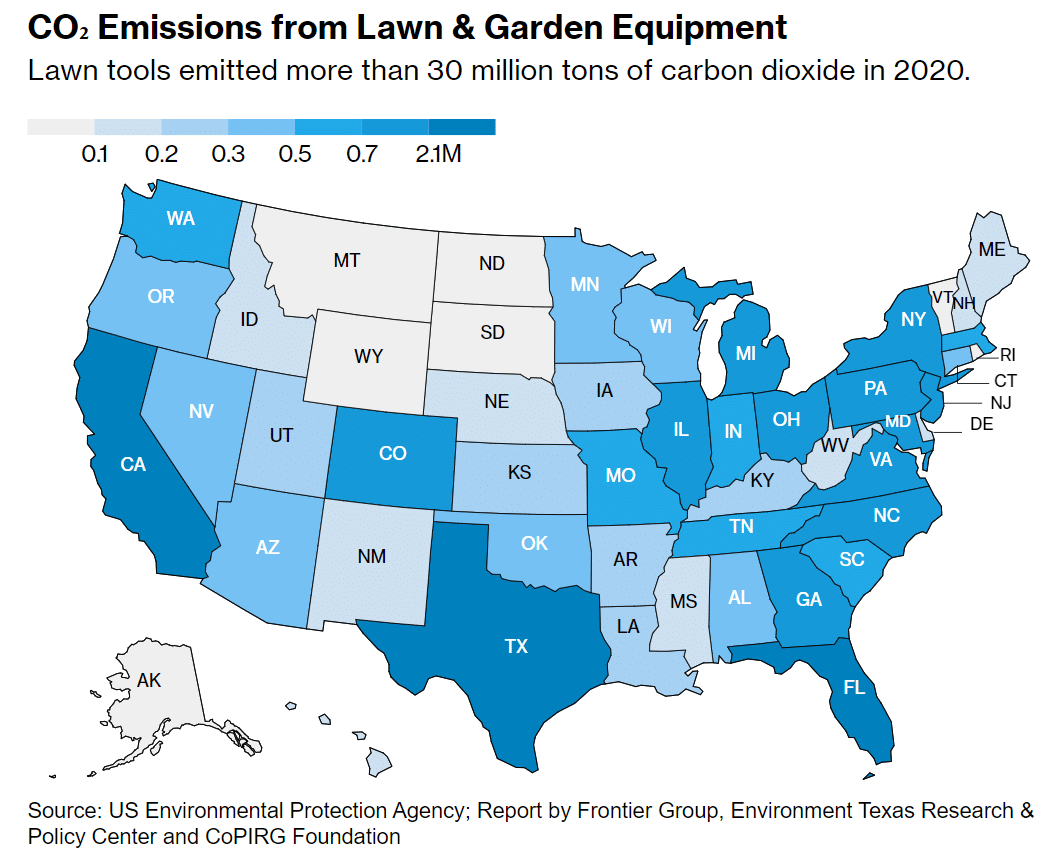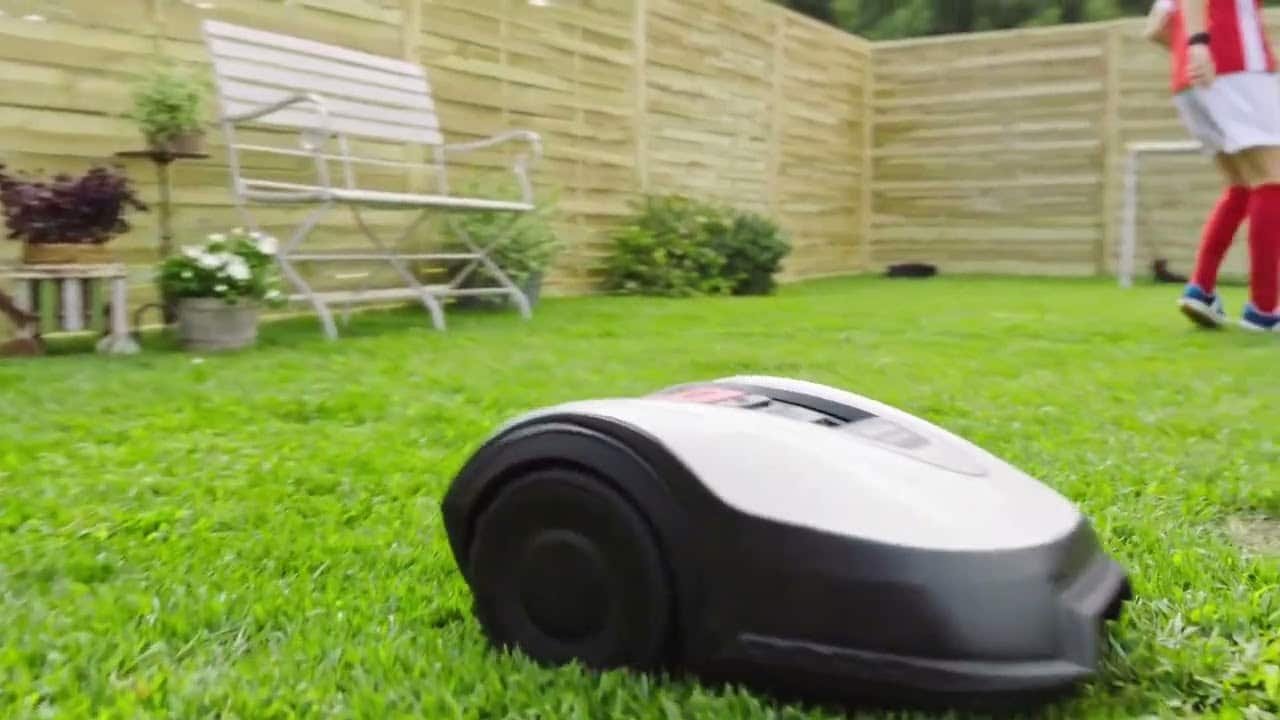California enacted a law in 2022 to phase out gas-powered vehicles by 2035, and now it’s planning to do the same for millions of lawn mowers, taking effect in 2024.
The state will ban the sale of gas-powered lawn care equipment according to a new law phasing out small, off-road engines.
Small But More Terrible in Polluting Than Cars
The world’s 4th-biggest economy will be the first to phase out fossil fuel-powered landscaping tools. This decision marks a significant move in environmental policy.
The ban isn’t just about eliminating the noise the equipment causes but primarily focuses on curbing emissions from small engines. These small, off-road engines (SOREs) are known to be more polluting than all cars combined in the state.
California’s ambitious goal of achieving carbon neutrality by 2045 requires addressing emissions from various sources, including SOREs. The comparison drawn by the California Air Resources Board (CARB), a state agency that regulates air quality, between the emissions from these SOREs and a 2016 Toyota Camry’s output is quite striking:
- 1 hour use of a gas-powered lawn mower releases as much pollution as a Toyota Camry does over 300 miles.


The ban has sparked a debate similar to the controversy surrounding the ban on gas stoves. Opposition from certain groups, including some Republicans and gas companies, argues that these restrictions impede consumer choice.
A policy analyst at the environmental think tank Frontier Group highlighted the growing awareness of the impact of gas stoves and gasoline-powered lawn equipment on public health. This move will be closely observed by policymakers across the country to assess its effectiveness in driving environmental change.
The ban also serves as a test of Americans’ acceptance of cleaner technologies in their daily lives amid increasing restrictions on gas-powered appliances, traditional vehicles, and the fervent push toward electric alternatives by companies.
Carbon Emissions of Lawn Care Equipment
The ban on gasoline-powered lawn equipment in California could signify a transformative shift in the landscape of suburban America, where manicured lawns symbolize status and pride. The cultural significance of lawns in the post-war era was associated with the acquisition of homes by returning veterans. Their well-manicured grassy yards became a hallmark.
Back in the 1950s, having a lawn was not a choice but an inherent aspect of owning a house. However, this American dream came at an environmental cost.
Gas-powered lawn equipment, as per the CARB, emits pollutants comparable to driving a car 300 miles in just an hour. The emissions from these tools, especially lawn mowers and leaf blowers, significantly contribute to air pollution while generating excessive noise.
In 2020, lawn tools emitted over 30 million tons of CO2, geographically illustrated below per state.


The emitted gas can negatively impact both human health and wildlife; in contrast, electric alternatives offer quieter and cleaner operation.
The need to maintain lawns has evolved into a substantial industry. The North American market accounts for a considerable portion of the global power lawn and garden equipment market.
Today, manufacturers are investing heavily in encouraging consumers to adopt battery-powered options, particularly as regulations become more stringent. In fact, many individuals and businesses have already transitioned to electric alternatives voluntarily or due to local regulations.
Moreover, various cities and towns nationwide have implemented bans or restrictions on gas-powered equipment, including those in Naples, Florida and Washington, DC. Their decisions emphasize growing awareness and action toward cleaner and quieter lawn maintenance practices.
The Big Push for Electrifying Appliances
The movement towards electric lawn equipment is gaining momentum, driven by incentives provided by local governments and evidenced by an uptick in sales of electric tools. This shift reflects an acknowledged reality among lawn equipment manufacturers: the future lies in battery power.
While companies like Stanley Black & Decker Inc. aren’t entirely eliminating gas-powered equipment, they are prioritizing electrified devices.
Other manufacturers, like Husqvarna and Honda, are focusing on innovations like robotic mowers and autonomous, battery-powered equipment, designed to navigate and maintain lawns efficiently.


However, not everyone is readily embracing this transition to electrification, particularly because of the costs. Electric tools can come with a price premium of up to 25% for hand-held grass cutters and 50% for push mowers compared to their gas-powered counterparts.
Concerns also revolve around the performance, durability, battery life, and charging limitations of electric models, especially for extensive landscaping tasks.
The California rule banning the sale of new gasoline-powered lawn equipment in 2024 aims to drive this transition without prohibiting the use of existing gas-powered tools. The new policy also allocates $30 million for rebates and programs to aid landscapers in shifting to zero-emission equipment.
Just last month, the state enacted the nation’s first-of-its-kind climate disclosure law that requires companies to report on their carbon emissions and climate-related financial risks.
The lawmaker behind the new legislation, Marc Berman, envisions a broader implication beyond landscaping. He hopes it will pave the way for more aggressive policies targeting gas-powered appliances like heaters and pumps. The ultimate goal is to achieve significant reductions in air pollutants and greenhouse gas emissions.
- SEO Powered Content & PR Distribution. Get Amplified Today.
- PlatoData.Network Vertical Generative Ai. Empower Yourself. Access Here.
- PlatoAiStream. Web3 Intelligence. Knowledge Amplified. Access Here.
- PlatoESG. Carbon, CleanTech, Energy, Environment, Solar, Waste Management. Access Here.
- PlatoHealth. Biotech and Clinical Trials Intelligence. Access Here.
- Source: https://carboncredits.com/californias-bold-shift-say-goodbye-to-carbon-emission-gas-powered-lawn-mowers-by-2024/



